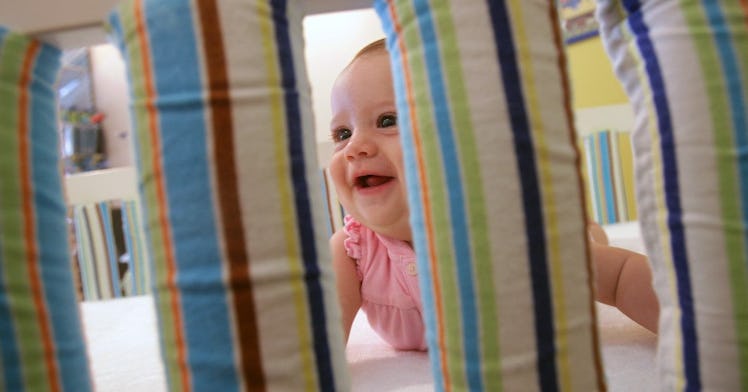These Deadly Infant “Sleep” Products Are Finally Illegal
Crib bumpers and inclined infant sleepers are finally illegal to manufacture and sell in the United States.

Yesterday, President Biden signed into law a bill that would make
crib bumpers and inclined sleepers illegal to manufacture or sell in the United States. The bill, called the Safe Sleep for Babies Act, passed unanimously through the Senate earlier this month. According to the Consumer Product Safety Commission, crib bumpers have been linked to the deaths of at least 113 infants, and inclined sleepers have been linked to around 100 deaths. “After years of perseverance and many tears, the Safe Sleep for Babies Act has finally been signed into law,” Sara Thompson, whose 15-week-old son died in an inclined sleeper, said in a statement from advocacy group Kids in Danger, or KID. “Hopefully, this will help lower the number of preventable infant deaths. For all of our angels and all of the grieving parents, this is a victory in their memory. I urge parents now to take the danger seriously and listen to the Science.”Retailers and manufacturers have 180 days to discontinue the products and remove them from shelves, which is six months that these dangerous products are still available for sale to the public.
Why Are Crib Bumpers and Inclined Sleepers Dangerous?
Crib bumpers, which have been a staple for decades, may impede airflow into and out of the crib and may also pose an entrapment hazard, causing mobile infants to become stuck between the pad and the crib rails. Between 1990 and 2016, 113 infants died in cribs that contained padded bumpers, which were intended to protect babies from crib rails. Crib bumpers are defined as “padded materials inserted around the inside of a crib” that is “intended to prevent the crib occupant from being trapped in any part of the crib’s openings,”
per Good Morning America. Between 1985 and 2012, 146 babies were injured as a direct result of crib bumpers. Injuries included choking, entrapment, and near-suffocation.“The American Academy of Pediatrics has told caregivers for years that padded crib bumpers are unsafe because we know that they have been tied to dozens of infant fatalities,” chairman of the AAP’s Council on Injury, Violence, and Poison Prevention, Ben Hoffman, M.D., told Consumer Reports.“And while the products are advertised as a way to protect infants from getting their arms and legs stuck between crib slats,” he adds, “research shows babies do not need protection from this problem, which is more of an inconvenience rather than a threat to their safety.”Inclined sleepers, per the new law, are defined as greater than 10 degrees. can cause an infant’s head to slump forward, chin-to-chest, and obstruct the airway, resulting in suffocation. The sleepers, like the Fisher-Price Rock-n-Play, which was recalled and discontinued in 2019 after being linked to over 50 deaths and dozens more injuries, were ubiquitous in nurseries and living rooms in the early and mid-2010s. (Fisher-Price has denied any wrongdoing and said at the time of a Congressional Report that alleged the company ignored safety issues that the Rock-n-Play was “developed following extensive research, medical advice, safety analysis… It met or exceeded all acceptable regulatory standards.”)
What are Safe Sleep Guidelines for Infants?
According to the American Academy of Pediatrics safe sleep guidelines, babies should be put to sleep on their backs, on a firm crib mattress free of pillows, blankets, toys, or padding to prevent accidental suffocation. (These are otherwise known as the ABCs of infant sleep — alone, on their backs, in the crib.)
“Every parent wants to keep their baby safe,” Dr. Rachel Moon, lead author of the AAP policy statement on Sudden Infant Death Syndrom and other sleep-related deaths, said in a 2020 statement. “We want to be sure families understand what research tells us about where and how to safely prepare babies for sleep, whether they are at home or with a childcare provider or when traveling.”